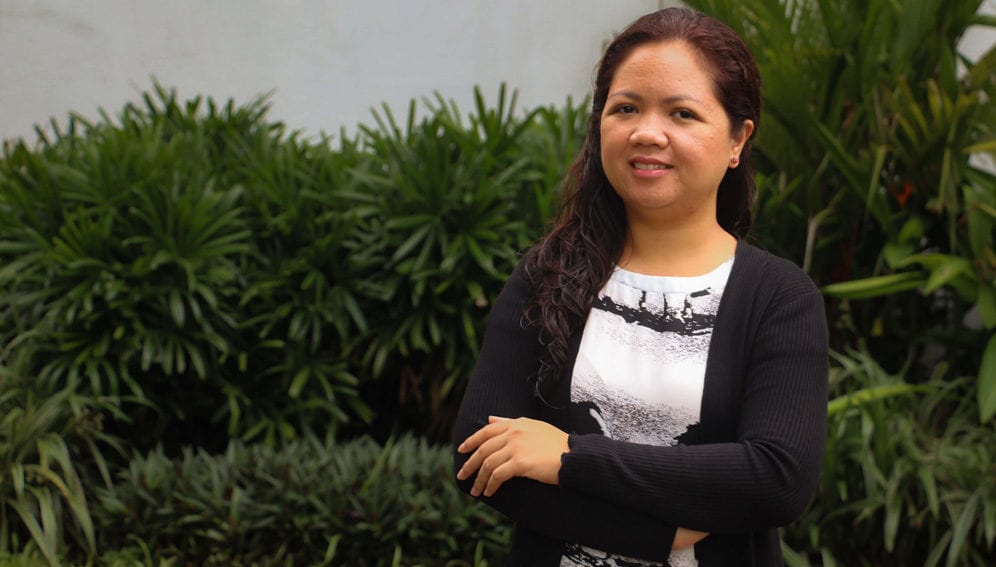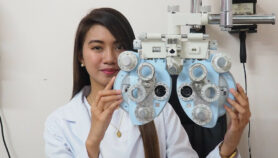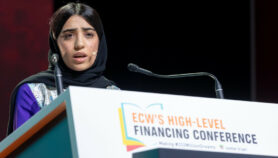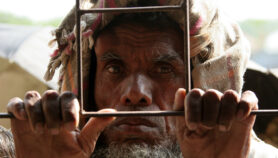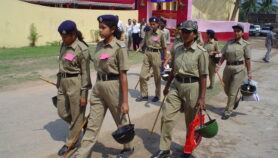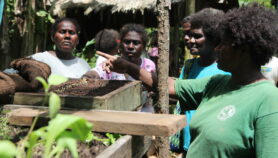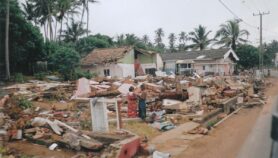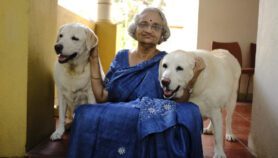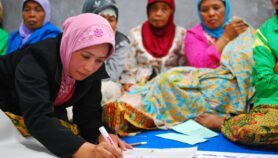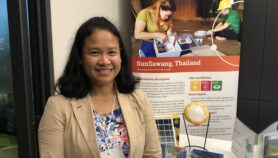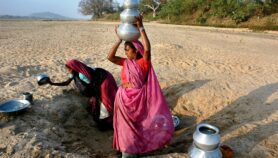By: Paul Icamina
Send to a friend
The details you provide on this page will not be used to send unsolicited email, and will not be sold to a 3rd party. See privacy policy.
Gay Jane Perez has carved for herself a place in the rarefied world of precision agriculture, using satellite technology to increase crop productivity and respond to climate change.
An associate professor at the Institute of Environmental Science and Meteorology, University of the Philippines, she received in October this year’s Science Prize for Women at the 10th Informal Association of Southeast Asian Nations (ASEAN) Ministerial Meeting on Science and Technology.
The US$20,000 ASEAN-US prize recognised her work to help farmers improve yields. The award — provided by the US mission to the ASEAN and Underwriters Laboratories, a US-based consultancy firm — supports promising early-career women scientists in the ASEAN and encourages collaboration between member-countries and the US. It also recognises female researchers for scientific contributions relevant to ASEAN while inspiring other young women to pursue careers in science, technology, engineering and mathematics (STEM).
“A career in science and technology is not very attractive for women primarily because of the lack of role models”
Gay Jane Perez, University of the Philippines
Perez’s interests took her to the National Aeronautics and Space Administration (NASA), where she discovered the power of satellite data. She then joined the IESM where, over the last six years, her research projects included the practical use of satellite observations in developing computing tools to predict the impact of environmental changes.
In 2013, she was appointed project scientist for the country’s two microsatellites that will determine, among other tasks, the health of vegetation and the location of crops affected by extreme weather.
SciDev.Net talked with Perez shortly after she received the ASEAN-US prize.
It is exceptional for a Filipino, much more a woman, to have been part of NASA. How was the experience relevant to your research in the Philippines?
My fellowship at NASA started in 2010 immediately after I received my PhD at UP. It was at NASA’s Goddard Space Flight Centre that I first worked with satellite data. There, I discovered the value of using remotely sensed data for understanding the spatiotemporal variation of Philippine vegetation in response to climate and environmental changes.
Guided by my mentor Josefino Comiso, a leading physical scientist at the Goddard Space Flight Centre and NASA, and interacting with scientists and programmers, I learned how to process, analyse and interpret satellite data. My training there is instrumental to research focused on remote-sensing applications that I pursued in the Philippines.
My experience at NASA also equipped me to take on the big responsibility of leading one of the projects under the Philippine microsatellite programme. I was exposed to some of the best practices of a national space agency, which I think can serve as a benchmark as we work towards the establishment of our own space agency.
You have just received the ASEAN-US Science Prize for Women in recognition of your work in digital space technology and agriculture. Please describe your work on precision agriculture.
My research makes use of satellite data which enables simultaneous measurement of different environmental variables. With satellite remote sensing we can examine spatial distribution of vegetation, temperature, precipitation and soil moisture that, in turn, provide the ability to assess drought impacts. We can also assess how drought evolves through time, which can be the basis of drought advisory and corresponding mitigation measures.
Coupled with ground measurements for calibration and validation, satellite-derived products can be used to determine the health of vegetation and the location of crops affected by drought and estimate damage. Looking at the development of drought alongside the stages of crop growth, one can recommend appropriate intervention, such us providing added irrigation, early harvesting or choosing to plant at earlier dates.
Factoring in global weather forecasts will deliver advisories to farmers to help them plan what crops to plant and optimise yield.
You say that precision agriculture using satellite data goes beyond local settings to global dimensions. Please elaborate.
Although solutions to precision agriculture appear localised and site-specific, they actually require large-scale considerations since the idea is to optimise crop yield, not just for a small town but for an entire planet. Using satellite data will allow us to do this since the extent of images has global coverage and are available at spatiotemporal resolutions that [suit] precision agriculture applications.
The Science Prize for Women encourages the establishment of networks among peers in South-East Asia. How would you help in this initiative? How would the initiative help women scientists and researchers?
One way [to help] is to advocate for open data. The use of satellite data together with global climate models could leapfrog the region’s capability to generate comprehensive information to maximise crop productivity.
I can also promote capacity building through collaboration with experts from different member-countries. Establishing this network will create more opportunities for women scientists to participate and conduct research in precision agriculture.
How would you empower Filipino women in the science and technology industry?
I hope to serve as a role model for aspiring scientists and popularise the important role of women in scientific research. A career in science and technology is not very attractive for women primarily because of the lack of role models. There are very few women scientists in the country. For instance, there were two women scholars who were sent to Japan (to train on the microsatellite program). This pales by comparison to the 15 men scholars.
At a young age, girls are more exposed to careers that many women pursue in medical fields, education, business administration, etc. Once they start pursuing the STEM track and career, most will realise that the disciplines and working environment are not gender sensitive.
Since getting the award, I have received several invitations to discuss my research and share my journey in becoming a scientist. I hope that through these platforms I can inspire the younger generation.
Give science and technology a chance. Undeniably, these fields are difficult and require intellectual rigour. But for the same reasons, they become rewarding as women surmount these challenges. Recently, the government has been offering scholarships, fellowships, research grants, foreign exchange programmes, etc., that young students and researchers can take advantage of.
Gender disparity did not prevent a young girl from the province to pursue her dreams. How did you surpass obstacles to your dream?
I think [a] healthy environment at home helped me succeed. Despite my parents not finishing college, they worked hard to send me to school and ensure that I received a good educational foundation. They took the risk of finding a new means of livelihood for our family. Their knowledge on the technical aspects of what I'm doing is limited but they never fail to provide encouragement and advice when I need it the most.
I thought of becoming a medical doctor. But my farfetched dream was to become an astronaut. I call it farfetched because I did not know [any] astronauts. I just saw them in sci-fi movies, often depicted as Caucasians. But it's very much likely that we'll have our own female astronaut in the future, especially if we can establish our space agency soon and sustain the initial efforts that we made in space science and technology.
This piece was produced by SciDev.Net’s Asia & Pacific desk.


